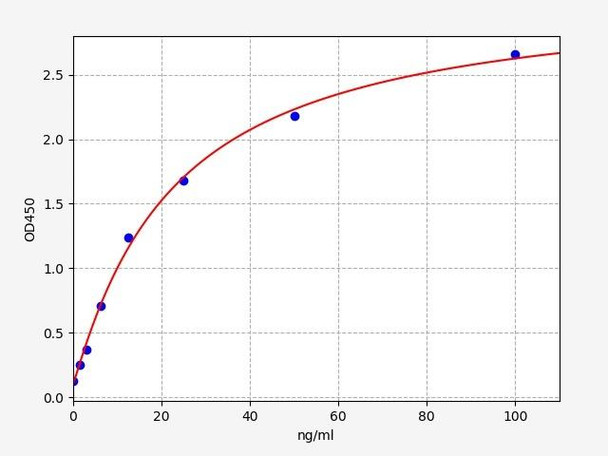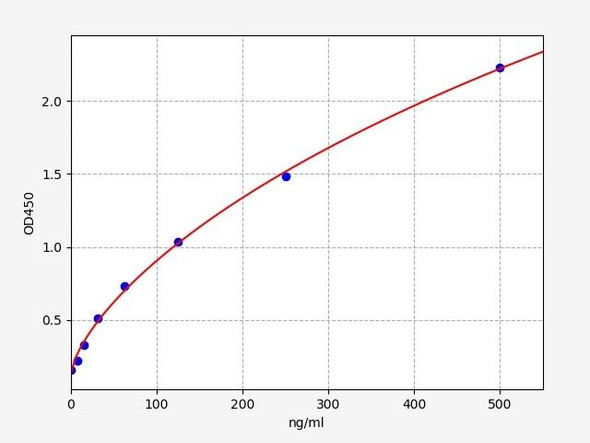Apolipoprotein CIII (APOC3) is a vital protein involved in regulating lipid metabolism. It plays a crucial role in modulating the breakdown and clearance of triglyceride-rich lipoproteins, such as very-low-density lipoproteins (VLDL) and chylomicrons. This highly sensitive ELISA kit enables accurate quantification of APOC3, providing valuable insights into lipid disorders and metabolic syndrome in monkeys.
Description
Overview
Monkey APOC3 / Apolipoprotein C-III ELISA Kit
Key Features
| Save Time | Pre-coated 96 well plate | |
| Quick Start | Kit includes all necessary reagents | |
| Publication Ready | Reproducible and reliable results |
Overview
| Product Name: | Monkey ApoC3 (Apolipoprotein C3) ELISA Kit |
| Product Code: | MKFI00008 |
| Size: | 96 Assays |
| Alias: | ApoC3, Apolipoprotein C3, APOC3, ApoC-III, MGC150353, Apo-CIII, APOCIII, apoC-III |
| Detection Method: | Sandwich ELISA, Double Antibody |
| Target: | Monkey ApoC3 |
| Reactivity: | Monkey |
| Sensitivity: | 0.938ng/ml |
| Range: | 1.563-100ng/ml |
| Storage: | 4°C for 6 months |
| Note: | For Research Use Only |
Additional Information
| Recovery | Matrices listed below were spiked with certain level of Monkey ApoC3 and the recovery rates were calculated by comparing the measured value to the expected amount of Monkey ApoC3 in samples. Please contact us for more information. |
| Linearity: | The linearity of the kit was assayed by testing samples spiked with appropriate concentration of Monkey ApoC3 and their serial dilutions. The results were demonstrated by the percentage of calculated concentration to the expected. Please contact us for more information. |
| CV(%) | Intra-assay <8 Inter-assay <10 |
Kit Components
| Component | Quantity | Storage |
| ELISA Microplate (Dismountable) | 8x12 strips | 4°C for 6 months |
| Lyophilized Standard | 2 | 4°C/ -20°C |
| Sample/Standard Dlution Buffer | 20ml | 4°C |
| Biotin-labeled Antibody (Concentrated) | 120ul | 4°C (Protection from light) |
| Antibody Dilution Buffer | 10ml | 4°C |
| HRP-Streptavidin Conjugate (SABC) | 120ul | 4°C (Protect from light) |
| SABC Dilution Buffer | 10ml | 4°C |
| TMB Substrate | 10ml | 4°C (Protection from light) |
| Stop Solution | 10ml | 4°C |
| Wash Buffer (25X) | 30ml | 4°C |
| Plate Sealer | 5 | - |
Other materials required:
- Microplate reader with 450 nm wavelength filter
- Multichannel Pipette, Pipette, microcentrifuge tubes and disposable pipette tips
- Incubator
- Deionized or distilled water
- Absorbent paper
- Buffer resevoir
Protocol
*Note: Protocols are specific to each batch/lot. For the exact instructions please follow the protocol included in your kit.
Before adding to wells, equilibrate the SABC working solution and TMB substrate for at least 30 min at 37°C. When diluting samples and reagents, they must be mixed completely and evenly. It is recommended to plot a standard curve for each test.
| Step | Procedure |
| 1. | Set standard, test sample and control (zero) wells on the pre-coated plate respectively, and then, record their positions. It is recommended to measure each standard and sample in duplicate. Wash plate 2 times before adding standard, sample and control (zero) wells! |
| 2. | Aliquot 0.1ml standard solutions into the standard wells. |
| 3. | Add 0.1 ml of Sample / Standard dilution buffer into the control (zero) well. |
| 4. | Add 0.1 ml of properly diluted sample ( Human serum, plasma, tissue homogenates and other biological fluids.) into test sample wells. |
| 5. | Seal the plate with a cover and incubate at 37 °C for 90 min. |
| 6. | Remove the cover and discard the plate content, clap the plate on the absorbent filter papers or other absorbent material. Do NOT let the wells completely dry at any time. Wash plate X2. |
| 7. | Add 0.1 ml of Biotin- detection antibody working solution into the above wells (standard, test sample & zero wells). Add the solution at the bottom of each well without touching the side wall. |
| 8. | Seal the plate with a cover and incubate at 37°C for 60 min. |
| 9. | Remove the cover, and wash plate 3 times with Wash buffer. Let wash buffer rest in wells for 1 min between each wash. |
| 10. | Add 0.1 ml of SABC working solution into each well, cover the plate and incubate at 37°C for 30 min. |
| 11. | Remove the cover and wash plate 5 times with Wash buffer, and each time let the wash buffer stay in the wells for 1-2 min. |
| 12. | Add 90 µl of TMB substrate into each well, cover the plate and incubate at 37°C in dark within 10-20 min. (Note: This incubation time is for reference use only, the optimal time should be determined by end user.) And the shades of blue can be seen in the first 3-4 wells (with most concentrated standard solutions), the other wells show no obvious color. |
| 13. | Add 50 µl of Stop solution into each well and mix thoroughly. The color changes into yellow immediately. |
| 14. | Read the O.D. absorbance at 450 nm in a microplate reader immediately after adding the stop solution. |
Sample Preparation
When carrying out an ELISA assay it is important to prepare your samples in order to achieve the best possible results. Below we have a list of procedures for the preparation of samples for different sample types.
| Sample Type | Protocol |
| Serum | If using serum separator tubes, allow samples to clot for 30 minutes at room temperature. Centrifuge for 10 minutes at 1,000x g. Collect the serum fraction and assay promptly or aliquot and store the samples at -80°C. Avoid multiple freeze-thaw cycles. If serum separator tubes are not being used, allow samples to clot overnight at 2-8°C. Centrifuge for 10 minutes at 1,000x g. Remove serum and assay promptly or aliquot and store the samples at -80°C. Avoid multiple freeze-thaw cycles. |
| Plasma | Collect plasma using EDTA or heparin as an anticoagulant. Centrifuge samples at 4°C for 15 mins at 1000 × g within 30 mins of collection. Collect the plasma fraction and assay promptly or aliquot and store the samples at -80°C. Avoid multiple freeze-thaw cycles. Note: Over haemolysed samples are not suitable for use with this kit. |
| Urine & Cerebrospinal Fluid | Collect the urine (mid-stream) in a sterile container, centrifuge for 20 mins at 2000-3000 rpm. Remove supernatant and assay immediately. If any precipitation is detected, repeat the centrifugation step. A similar protocol can be used for cerebrospinal fluid. |
| Cell culture supernatant | Collect the cell culture media by pipette, followed by centrifugation at 4°C for 20 mins at 1500 rpm. Collect the clear supernatant and assay immediately. |
| Cell lysates | Solubilize cells in lysis buffer and allow to sit on ice for 30 minutes. Centrifuge tubes at 14,000 x g for 5 minutes to remove insoluble material. Aliquot the supernatant into a new tube and discard the remaining whole cell extract. Quantify total protein concentration using a total protein assay. Assay immediately or aliquot and store at ≤ -20 °C. |
| Tissue homogenates | The preparation of tissue homogenates will vary depending upon tissue type. Rinse tissue with 1X PBS to remove excess blood & homogenize in 20ml of 1X PBS (including protease inhibitors) and store overnight at ≤ -20°C. Two freeze-thaw cycles are required to break the cell membranes. To further disrupt the cell membranes you can sonicate the samples. Centrifuge homogenates for 5 mins at 5000xg. Remove the supernatant and assay immediately or aliquot and store at -20°C or -80°C. |
| Tissue lysates | Rinse tissue with PBS, cut into 1-2 mm pieces, and homogenize with a tissue homogenizer in PBS. Add an equal volume of RIPA buffer containing protease inhibitors and lyse tissues at room temperature for 30 minutes with gentle agitation. Centrifuge to remove debris. Quantify total protein concentration using a total protein assay. Assay immediately or aliquot and store at ≤ -20 °C |
| Breast Milk | Collect milk samples and centrifuge at 10,000 x g for 60 min at 4°C. Aliquot the supernatant and assay. For long term use, store samples at -80°C. Minimize freeze/thaw cycles. |
APOC3 (Apolipoprotein C-III) Background
APOC3 (Apolipoprotein C-III) Background
Apolipoprotein C3 (ApoCIII) is a protein that plays a crucial role in lipid metabolism and is primarily associated with circulating lipoproteins. It is synthesized primarily in the liver and to some extent in the intestine.
The monkey APOC3 Gene is present on Chromosome 4 and codes for an apolipoprotein, which means it is a component of lipoproteins. Lipoproteins are particles that transport lipids (such as cholesterol and triglycerides) through the bloodstream. They consist of a core of lipids surrounded by a shell of proteins, phospholipids, and cholesterol.
Predicted Structure of APOC3 from the Crab eating Macaque (Macaca fascicularis). Source: Uniprot
APOC3 Function
The main function of ApoCIII is to regulate the metabolism of triglyceride-rich lipoproteins, particularly very-low-density lipoproteins (VLDL) and chylomicrons. VLDL particles are produced in the liver and transport triglycerides from the liver to various tissues. Chylomicrons, on the other hand, are formed in the intestine and carry dietary triglycerides.
ApoCIII inhibits the breakdown of these lipoproteins by inhibiting the action of lipoprotein lipase (LPL), an enzyme responsible for hydrolyzing triglycerides into free fatty acids. By inhibiting LPL, ApoCIII decreases the clearance of triglycerides from the bloodstream, leading to increased levels of triglycerides in the circulation.
APOC3 Pathology
Elevated levels of ApoCIII and triglycerides are associated with an increased risk of cardiovascular diseases, such as atherosclerosis and coronary heart disease. ApoCIII has also been linked to insulin resistance and metabolic syndrome.
Research has shown that individuals with genetic mutations resulting in the absence or reduced levels of ApoCIII have lower levels of triglycerides and a decreased risk of cardiovascular disease. Consequently, ApoCIII has become a potential therapeutic target, and several drugs that target ApoCIII are being developed to lower triglyceride levels and reduce cardiovascular risk.
while ApoCIII is primarily associated with lipid metabolism, it also has other functions, including interactions with other proteins involved in lipoprotein metabolism and potential roles in inflammation and immune responses. Further research is being conducted to fully understand the diverse functions of ApoCIII and its implications in health and disease.
Monkey APOC3 ELISA Kit FAQs
Q: What is the purpose of the Monkey APOC3 ELISA Kit
The Monkey APOC3 ELISA Kit is specifically designed for the quantitative measurement of Apolipoprotein CIII (APOC3) levels in monkey samples. It provides a reliable and sensitive tool for researchers to study lipid metabolism and its association with cardiovascular health in monkeys.
Q. What kind of samples can be used with this kit?
The Monkey APOC3 ELISA Kit is compatible with various sample types, including monkey plasma and serum. It is important to carefully follow the provided instructions and sample preparation guidelines to ensure accurate and reliable results.
Q. Can this kit be used with samples from other species?
The Monkey APOC3 ELISA Kit is specifically designed and validated for use with monkey samples. While it may cross-react to some extent with closely related species, it is recommended to consult the product documentation or contact technical support to determine its suitability for other species.
Q: Where can I find more information about the kit and its usage?
For any technical inquiries or assistance regarding the Monkey APOC3 ELISA Kit, you can reach out to our team. They will be available to answer your questions and provide the necessary guidance to ensure a successful experiment.
Related Products
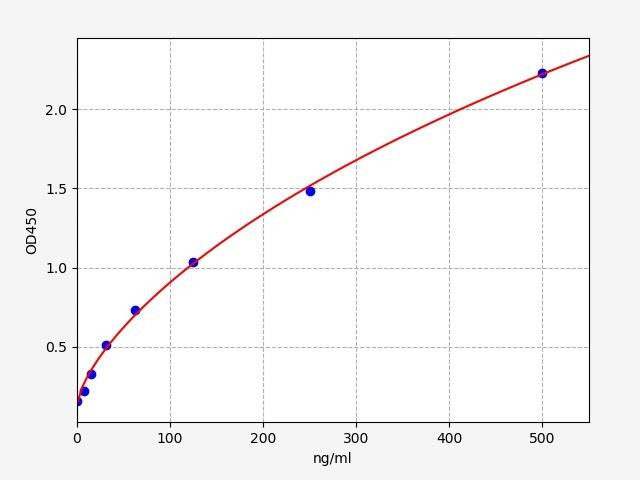
| Human APOC3 ELISA Kit | |
|---|---|
| ELISA TYPE: | Sandwich ELISA, Double Antibody |
| SENSITIVITY: | 4.688ng/ml |
| RANGE: | 7.813-500ng/ml |
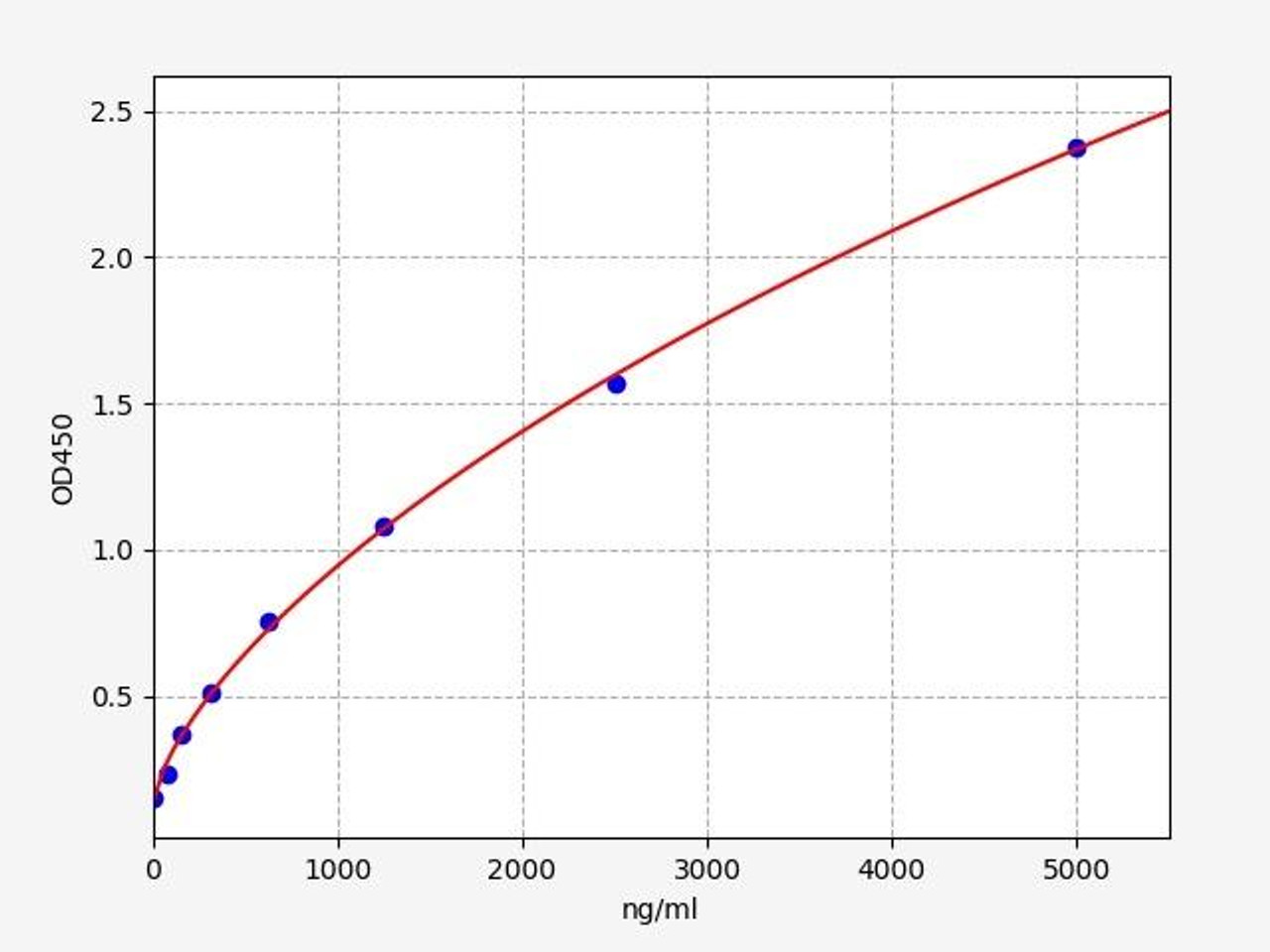
| Human APOB ELISA Kit | |
|---|---|
| ELISA TYPE: | Sandwich ELISA, Double Antibody |
| SENSITIVITY: | 46.875ng/ml |
| RANGE: | 78.125-5000ng/ml |
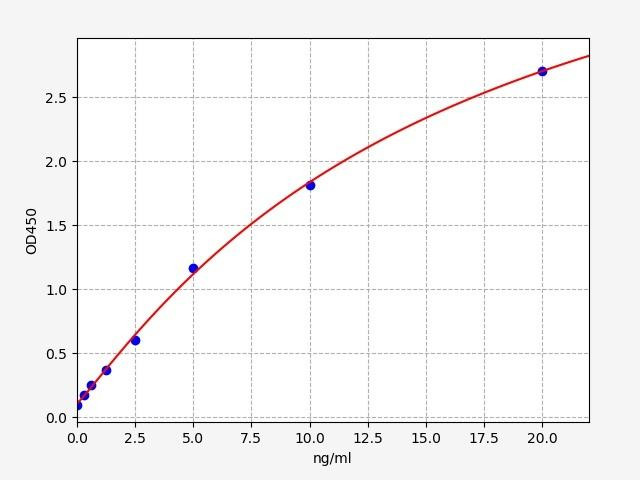
| Human VLDL ELISA Kit | |
|---|---|
| ELISA TYPE: | Sandwich ELISA, Double Antibody |
| SENSITIVITY: | 0.188ng/ml |
| RANGE: | 0.313-20ng/ml |

